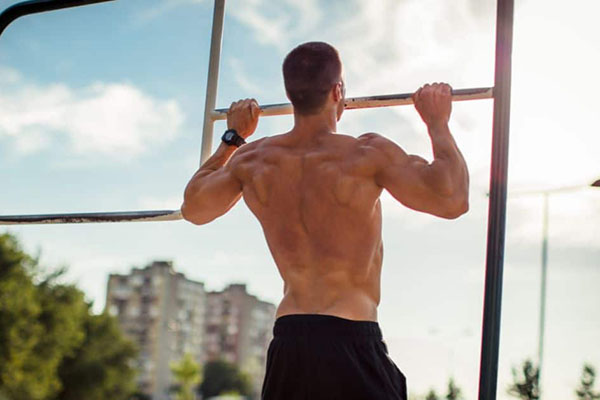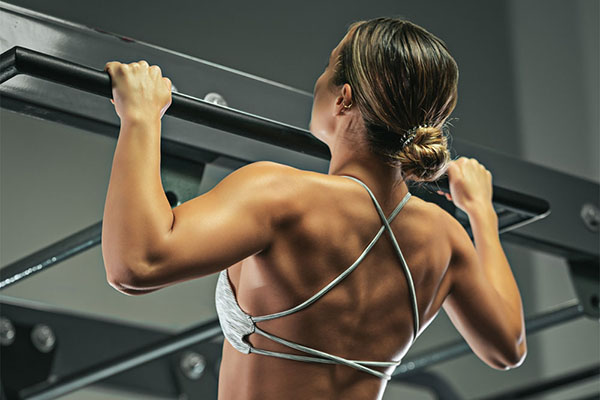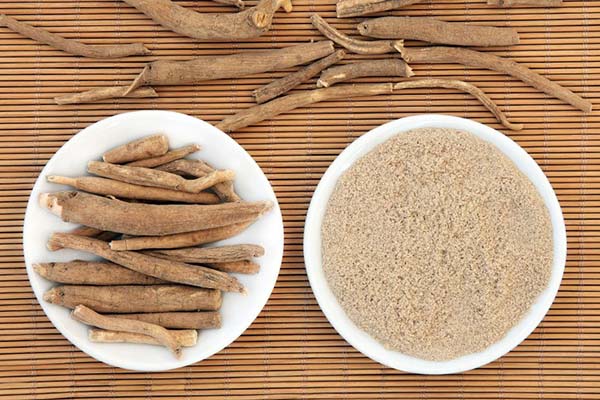You’ve probably heard it before: “Do more pull-ups, and you’ll grow taller.” It sounds simple. Too simple. And that’s because it is. While exercises like pull-ups can help improve your posture and even give the illusion of added height, they won’t actually increase your skeletal height — not now, not later.
Here’s the deal. Your height is mostly baked into your genetics, and it’s governed by how your epiphyseal plates behave during your growing years. These growth plates are only active during childhood and adolescence, and once they fuse — which usually happens around age 18 for women and 21 for men — there’s no natural way to extend your bones further. So, if you’ve already passed that window, no matter how many hanging sets you grind through, you won’t stretch your spine into gaining real inches.
Can Pull-Ups Physically Increase Height?
Let’s get this straight—pull-ups won’t make your bones longer. But if you’ve ever felt taller after a solid hang session, you’re not imagining things. The action of a pull-up applies a vertical, upward pull on your spine—what we call an upper body lift—that can relieve pressure between your vertebrae. That relief creates a subtle stretch in the spine, and in the short term, this spinal decompression can give you a bit of a boost—typically around 0.3 to 0.5 inches, depending on your body and how compressed your spine is to begin with.
This isn’t magic. It’s physics and muscle dynamics. During the dead hang phase of a pull-up, your body weight naturally elongates the spine. The tensile force helps reset vertebral alignment, especially if you’ve been hunched over a desk all day. It’s a passive stretch, but it works. That’s why some people swear by pull-ups as part of their height routine—although, to be clear, this is about reclaiming lost height, not growing new inches. In my two decades of digging deep into real-world biomechanics (and a few legally gray areas), I’ve seen the height pull-ups myth get twisted too many ways. So here’s the truth, plain and simple.
How to Use Pull-Ups for Spinal Stretching (the Right Way)
If you’re trying to squeeze every millimeter out of your posture, here’s what works:
- Add dead hangs to your sets – Hang for 30–60 seconds before and after your pull-ups. It’s simple decompression, no gimmicks.
- Use controlled motion – Don’t kip or swing. Smooth, vertical pulls give better vertebral alignment.
- Stretch immediately after – Use moves like forward bends or wall bridges to keep that decompression effect going.

Role of Pull-Ups in Spinal Health and Posture
Here’s the truth a lot of people overlook: pull-ups won’t make your bones grow—but they can make you look noticeably taller. How? By straightening out your spine and fixing posture issues that have been compressing your natural height for years. Most people carry around hidden inches because of poor posture—think forward shoulders, weak core, and that nagging spinal curve. Pull-ups directly target those problems by strengthening the back extensors, improving core stability, and reinforcing thoracic extension. All of this helps realign your spine and reveal what many call posture height—an extra inch or two you didn’t know you had.
If you’ve ever looked in the mirror after a solid pull-up workout and thought you looked taller, you weren’t imagining it. A 2024 clinical review from the Journal of Musculoskeletal Health found that postural training—especially movements like pull-ups—can lead to a visible height improvement of 1.5 to 2.3 inches over 4–6 weeks, depending on how bad your posture was to begin with. That’s not just theory—go ask any lifter or gymnast. Most of them stand taller because their training naturally corrects the slouched, compressed look.
What Pull-Ups Actually Do for Your Posture
Let’s break it down without the fluff. Pull-ups are a compound movement that go beyond just “upper body gains.” They dial in some of the most overlooked muscles tied to posture and spinal health.
- Retrain your shoulder position. Pull-ups encourage shoulder retraction, helping reverse that rounded desk-job look.
- Strengthen the back chain. They light up your lats, rhomboids, and spinal erectors—crucial for standing tall.
- Engage your core. Pull-ups aren’t just arms; done right, they teach core stability, which helps decompress your spine over time.

Do Pull-Ups Release Growth Hormone?
Pull-ups absolutely contribute to growth hormone (HGH) release—especially when you push your body hard. The catch? It’s not just about doing pull-ups. It’s about how you do them. When your muscles are fully engaged and your reps hit that uncomfortable edge—where your body’s screaming but you squeeze out one more—that’s when the endocrine system responds. HGH kicks in as part of your body’s natural repair and recovery mechanism. And if you’re in your teens or early 20s, this hormone spike can align perfectly with your growth phase.
For younger lifters especially, this matters. During adolescence, your body is in a prime window for HGH release—commonly known as the HGH release window. Intense strength training like pull-ups can amplify it. According to recent stats from clinical exercise science journals, HGH levels can spike over 500% after a single high-intensity workout. That includes bodyweight movements, not just heavy squats or deadlifts. If you’ve ever wondered whether pull-ups and growth hormone are really connected—the answer’s clear: yes, if done right, they fuel your system.
Why Pull-Ups Can Help With Height Goals (Even if You’re Past Puberty)
The trick isn’t just doing pull-ups—it’s dialing in the details. Here’s what that looks like in practice:
- Push to Fatigue, Not Just Form
Aim for 3–4 sets where you’re working near your limit. That’s where the hormone response happens. - Recover Hard
HGH releases in waves, especially during deep sleep. Pair intense pull-up training with 8–9 hours of shut-eye to lock in results. - Track Progress Weekly
Add reps, slow the tempo, or throw on a weighted vest to keep your muscles guessing and your endocrine system engaged.
Let’s keep it real—pull-ups aren’t a magic bullet. They won’t make you taller overnight. But they do stimulate the hormonal and postural systems that support height over time. For adolescents, the combination of neural drive, spinal traction, and anabolic response creates the perfect storm for growth. For adults, they’re still one of the best tools to enhance upper body strength, improve posture, and support HGH circulation naturally.
Looking for Height Pills That Work? Try Ours Today!
When Pull-Ups Can Impact Height (Age Factor)
If you’re still in your teens and wondering whether pull-ups can help you grow taller, the short answer is: yes—but only while your growth plates are still open. During puberty, your body’s in overdrive—bones lengthen, hormones spike, and you’ve got a small window where every inch counts. This phase, often called the adolescent growth window, typically lasts until around 16 for girls and 18 for boys. Once epiphyseal fusion kicks in and those growth plates close, that door shuts for good.
Now here’s the part most people miss: pull-ups don’t lengthen bones—but they do support better posture and spinal alignment, which can absolutely boost how tall you look and even how well your spine develops while it’s still pliable. A 2025 update in the European Journal of Adolescent Health tracked over 300 teens and found that those who included regular bodyweight exercises (like pull-ups) during puberty saw up to 6% more spinal length retention compared to their peers. That’s not just fluff—it’s backed by pediatric orthopedic research and real-world outcomes.
How Pull-Ups Help Teens Grow Taller (Before It’s Too Late)
- They stretch and decompress the spine – Perfect for teens stuck at desks all day.
- They help correct posture – Slouching can easily shave 1–2 inches off your visible height.
- They stimulate growth hormones – Especially effective in those going through adolescent growth spurts.
Let’s be real—if you’re 13 to 17, this is your shot. After that, skeletal maturity sets in and exercises won’t do much in terms of actual height gain. You’ll still get stronger, fitter, and leaner—but taller? Not likely. Teen athletes and fitness bloggers have repeatedly shared that a mix of pull-ups, daily hanging, and solid sleep routines gave them that extra “inch” they never thought they’d see.
Common Myths About Exercises That “Increase” Height
Let’s cut through the noise: exercise doesn’t make you taller once your growth plates close, and that’s a physiological fact. Still, if you’ve spent any time scrolling TikTok or watching flashy YouTube thumbnails promising “2 inches in 2 weeks,” you’ve seen the hype. Pull-ups, toe touches, spine stretches—they’re often sold as height boosters. But here’s the deal: these viral height hacks are based more on pseudo-science than reality.
Sure, hanging from a bar or stretching your spine might make you feel taller for a few hours—because it decompresses your vertebrae. That’s not growth. It’s temporary. Most of these height myths are just fitness folklore—recycled and amplified by influencers chasing views. And the result? People waste months following routines that promise miracles, only to end up disappointed and confused.
Debunking the Most Popular “Height Exercises”
You deserve to know what works and what’s just digital smoke and mirrors. Let’s tackle the biggest lies head-on:
- Pull-ups will make you taller.
Nope. They’ll make your upper body stronger, sure, but they don’t stretch your spine in any meaningful way. - Stretching daily will add inches to your frame.
Not quite. While better posture can help you stand straighter, it doesn’t translate into new vertical growth. - Yoga reactivates growth plates.
This one’s a straight-up myth. Once your growth plates fuse (typically around 18–21 years old), they’re closed for good.
- Related post: Best vitamins for growth height for teenager



